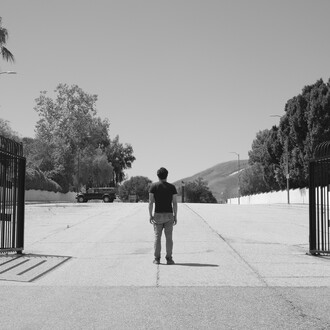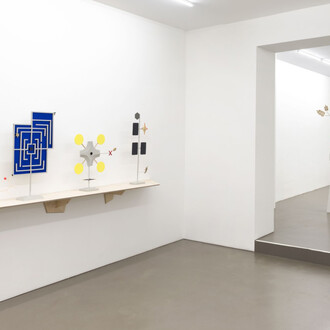Henni Alftan’s artistic practice is grounded in a profound exploration of the medium of painting, examining its methods and histories. Her intimately familiar yet intriguingly enigmatic portrayals of everyday life arise from a process of observation and deduction, resulting in precise and carefully cropped figurative works that embody a studied economy of means. By skilfully employing scale, perspective and texture, Alftan reveals the strangeness in the ordinary. On the occasion of Berlin Art Week, Monika Sprüth and Philomene Magers are pleased to present a solo exhibition, featuring all-new paintings and the artist’s first-ever presentation of drawings.
The exhibition title By the skin of my teeth, an idiom that signifies narrowly avoiding failure or just barely succeeding, evokes the atmosphere of the uncanny that pervades Alftan’s works. They exist on the threshold of representation, capturing the subject with only the thinnest margin of detail. Alftan’s is a brand of realism that is achieved not through excess but by restraint; much like the elusive ‘skin’ of teeth, any fewer particulars and the image risks tipping into mere abstraction. Her scenes and objects, whether in paint or pencil, are always legible yet imbued with tension through their close-up framing: the corner of an eye hidden behind large sunglasses, a wristwatch sitting perfectly between the wearer’s sleeve and gloved hand, a beam of light from a torch extending beyond the canvas edges—each is an isolated moment, softly murmuring with disquiet. They leave viewers uncertain about what happens next or what may lie just outside the frame.
The physicality of Alftan’s use of paint underscores that her subject is painting itself and the question of how images are mediated through the imprecision of memory, focusing less on the representation of meaning and more on the conditions of representation. In Hand in pocket (2025), for example, the paint mimics the fabrics more than it figures them, and in Haircut (2024), the strands of hair about to be cut are formed by obvious grooves of paint. Each piece is a critical image of itself, simultaneously object and image of the object. This emphasis on the material and process of painting becomes even more pronounced as Alftan’s ‘pictures of painting’—as she likes to refer to her works—will often subtly reference art history, blending them with visual culture into new compositions. For instance, in Overpass (2025), where the bridges of Claude Monet or Utagawa Hiroshige meet an empty, flat motorway that verges on the abstract, she performs a nuanced iconographic transfer —a reimagining of historical motifs within a contemporary landscape.
The works address and interact with one another: in Pour (Déjà-vu) (2025), the milk being poured into a glass is still contained; however, in Flood (2025), water levels have dramatically risen, overflowing and sweeping away cars, whose simple geometric forms are reflected in the oddly clear waters. Pour stems from Alftan’s series of diptychs subtitled Déjà-vu that feature two sequential actions within the same scene. Here, the series’ characteristic temporal shift is displayed by the amount of milk poured: from a splash of milk in the first image to a glass filled to the brim, threatening to spill over the sides in mere moments, in the second. Installed in different rooms in order to be seen separately, the two elements activate viewers’ memories and emphasise the space and physicality of Alftan’s canvases as objects in and of themselves. Ultimately, she returns the image to its original state as a recollected image, which the viewer carries from one painting to its counterpart, thereby changing the context of the first seemingly innocuous image.
Punctuating the paintings is Alftan’s series of precise drawings on coloured paper, a new addition to the artist’s œuvre. Smaller in scale, these works prompt the viewer to look even closer at the common objects—small enough to fit in the painted pocket of Hand in pocket—portrayed from above: things such as dominoes, a comb, nails, matches and a tooth are organised in tidy arrangements. Alftan elevates mundane items to the level of archaeological artefacts, recalling the enduring relationship between art history and material culture. By blurring the boundaries between the ordinary and the historical, the works echo and engage with traditions of still life and trompe-l’œil painting that have long explored the significance of everyday objects. The framing with white mat board further stresses this perception, creating a visual dialogue with museum display and classical framing techniques, thereby drawing the viewer in even more.
In By the skin of my teeth, Alftan masterfully captures the essence of modern life through her constructions of lines, colours and proportions. Providing lessons on how to look, these works explore the limits and possibilities of seeing and representing contemporary existence through painting.
















